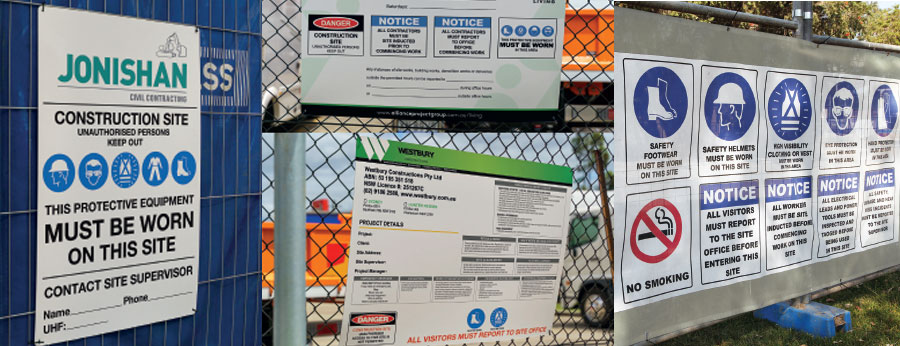What is a mandatory sign?

In a workplace or another space where health and safety are paramount, it's often crucial to be explicitly clear about an internal rule, a regulation, a hazard or a risk - and that's why the presence of a mandatory sign can be crucial for a wide range of organisations, industries and applications.
What is the aim of a mandatory sign?
mandatory signage is an example of a standardised regulatory sign that makes a simple and compulsory instruction explicitly clear. By strictly enforcing the mandatory sign's instruction, the aim is to keep staff, personnel and visitors safe by empowering them with a visual representation of a rule.
Examples:
- Face coverings must be worn
- Aisles must be clear
- All cylinders must be chained
- Blind intersection - sound horn
What does a mandatory sign look like?
There are hundreds of standard examples of mandatory signs, and sign manufacturers can also manufacture custom messages. Mandatory sign design is standardised, typically featuring a white rectangular background with a blue and white circular disc illustration and a clear message in black text. Some mandatory signs, however, may not include the pictogram and instead feature text only, while another typical mandatory sign may contain multiple warnings or messages with corresponding text and pictograms.
What size is a mandatory sign?
While mandatory signs are standardised, conforming with Australian Standard AS1319-1994, they can be manufactured or reproduced in various proportional sizes to suit the nature and conditions present in the workspace. They are typically printed on metal for purposes of durability, but polypropylene and corflute are other common materials for mandatory signs, while in other situations a self-adhesive label is most appropriate.
What messages does a mandatory sign convey?
The most crucial element of every mandatory sign is that the message is explicitly clear and therefore easily understood and followed. The aim is to avoid any potential misunderstanding which could even exacerbate a risk or hazard. For that reason, the list of standard and potentially customised mandatory signs is almost endless, making the choice difficult and even overwhelming for workplace administrators.
What is the key feature of a mandatory sign?
For that reason, the key feature of every mandatory sign is that, with the strategic choice of text and clear pictogram, the message emphasises the simplicity of following the instruction and the presence of an unambiguous risk. Strictly following the instruction is what those present need to do to remain safe and in full compliance, with the mandatory sign conveying the wishes and obligations of workplace administrators without it needing to be done face to face.
What colour is a mandatory sign?
Mandatory signs are typically coloured blue in order to differentiate them from other categories of signs that may be present in the workplace. Other categories include prohibition signs and fire signs (red), danger signs (white, black and red), warning signs (yellow) and emergency information signs (green). The most common blue mandatory signs are staff and visitor requirements for protective clothing or equipment, but the range of messaging is vast.
Why do administrators implement safety signage?
Most health and safety administrators within organisations will recognise the need to implement a mandatory sign when those present have to adopt a particular behaviour in order to comply with health and safety regulations or internal rules.
In other words, while other workplace safety signs may advise a certain behaviour or draw attention to a potential hazard, the mandatory sign is distinct in issuing a strict 'must-do' command. Typical examples involve the mandatory wearing of Personal Protective Equipment (PPE), or following an instruction to remain safe in what may be a dangerous environment. Following the clear command will enable personnel not only to remain safe, but remain in full compliance with regulations or rules they might otherwise have little knowledge about.
Where are mandatory signs located?
Mounted or otherwise located in places that are easily visible to all people who are approaching the area in which the hazard is present or the rule/regulation is in force. This will differ depending on the nature of the workplace and the particular industry, meaning that some workplaces will either need several separate mandatory signs, single mandatory signs with combined messages or a single mandatory sign that may be replicated elsewhere in the workspace.
How do you choose the right signage?
The mandatory sign niche may seem overwhelming, but understanding which signage is necessary for the particular workspace, activity, industry or regulation is crucial. That is because it is an explicit message requiring those who see it to follow a certain mandatory behaviour, for a range of important reasons. If you are unsure what type of mandatory sign is right for your specific application, advice and guidance from a qualified and experienced expert are highly recommended.
 Sign In
Sign In 







